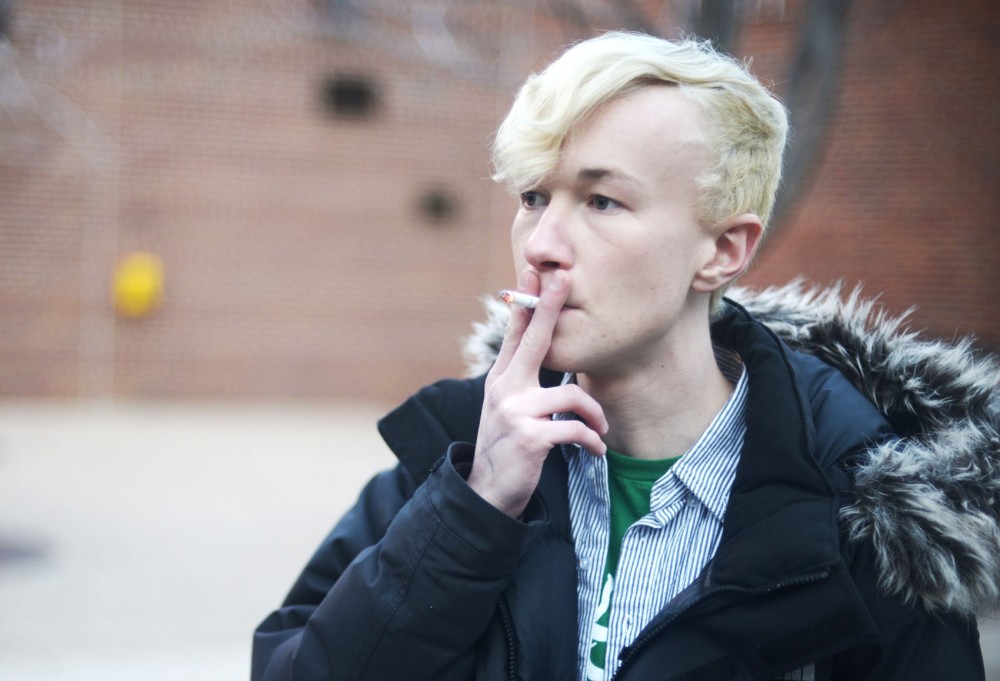After years of discussion and debate, the University of Minnesota may become a smoke-free campus.
The University Senate passed a resolution Thursday to make the Twin Cities campus tobacco free. To take effect, the resolution must be approved by University President Eric Kaler — who is now in support of making the University a smoke-free campus.
“Since this issue first crossed my desk, the lack of consensus had been one of the holdups,” Kaler said in a statement. “That is no longer a concern. Frankly, it’s about time for us on the Twin Cities campus.”
Dave Golden, chair of the University Senate’s Social Concerns Committee, said the purpose of going tobacco free is to cut down on secondhand smoke exposure.
“We are a campus community that cares about health,” he said.
As recently as September, Kaler was against the University campus going smoke free. But he now said he will “gladly be prepared” to go smoke free once there is a campus-wide consensus on the final plan.
University officials will work on an implementation plan with the framework laid out in the resolution by Boynton Health Service.
Other Minnesota campuses are already smoke or tobacco free, including Minnesota State University-Mankato and the University of Minnesota’s Crookston and Duluth campuses.
Nationwide, more than 800 colleges and universities have gone smoke free, according to the resolution.
But some say these policies are difficult to enforce.
Katie Bobich, a Minnesota State Student Association member at Mankato, said the university’s smoke-free policy only slightly cuts down on smoking and isn’t strongly enforced.
“It’s pretty much a slap on the wrist,” she said.
University of Minnesota biology freshman John Lundquist doesn’t support a smoke-free campus policy and said a ban at the University would be difficult to impose.
“Enforcing [a smoke-free campus] is a big logistical issue,” he said.
Golden said most campuses use communication and social enforcement to impose smoke- or tobacco- free policies.
“We’re not asking police to stand outside and give tickets or anything like that,” he said.
About 3 percent of students on the Twin Cities campus reported daily tobacco use in 2010, according to Boynton’s 2010 College Student Health Survey.
But about 18 percent of students reported using tobacco within the past month, and more than half of those reported doing so outside on campus.
Haley Webb, a speech-language-hearing sciences sophomore, said the amount of smoking on campus was higher than she expected when she started at the University.
“One of the biggest shocks was walking around and everybody was smoking,” she said.
The Minnesota Student Association gave its support for a smoke-free campus in November, although two weeks previously it had shot down a similar measure, alluding to a lack of consensus on campus.
About 47 percent of students support a smoke-free campus policy, according to Boynton’s 2012 College Student Health Survey.
There are also concerns that outlawing smoking on campus would disenfranchise some.
Christopher Sheehy, a University research specialist, said a smoking ban would make the University “anti-competitive” with recruiting professors from other countries.
“Tons of professors smoke,” he said. “I think it would give a bad impression of the attitude [toward smoking].”
Smokers cost the University’s employee benefit program UPlan at least $4 million in claims every year, according to an estimate from the University’s Employee Benefits office.
Smoking is a way for some to “gather their thoughts,” said economics sophomore Matthias Merz, adding that it’s a personal preference.
“It’s a way to take a break,” Merz said.
Electrical engineering sophomore Ethan Yanna said a smoking ban on campus would be tough on smokers.
He said there should be designated areas on campus that allow smoking if a ban goes into place.
“I’m not a big fan of secondhand smoke, but I also think that people deserve the chance [to smoke],” he said. “If they want to, it’s their choice.”








